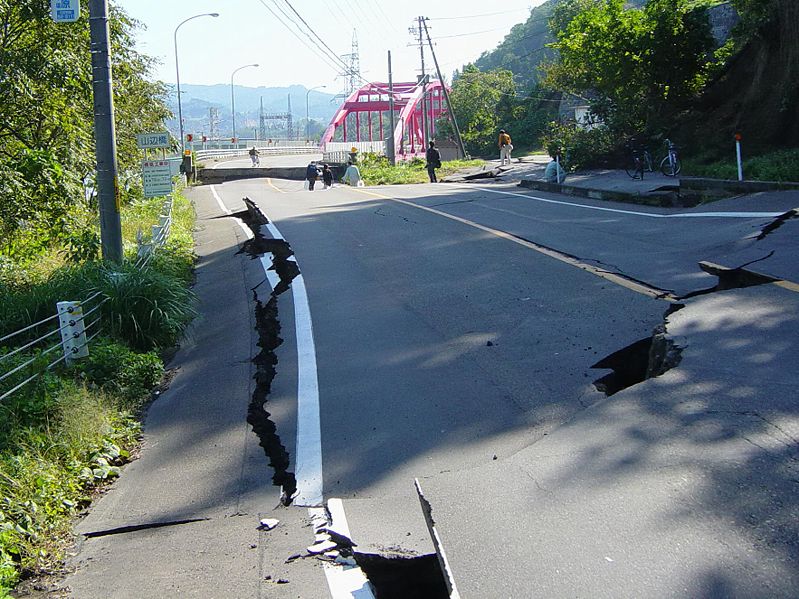The destruction produced by earthquakes can be devastating in its self, but often the knock on effects of this destruction can be even worse. For example if an earthquake damages a bridge beyond repair there are not just problems for the poeple on and around the bridge. It also means that the emergency services can't get across the bridge to help put out fires, and generally support people on the other side. In the longer term the lack of bridge could slow down the rebuilding after the disaster.
 Engineers at the university of Nevada are trying to reduce this problem by using modern materials. The cause of much of the problem is the steel that is used to reinforce the concrete in the bridges. During a large earthquake this is designed to bend so that it absorbs some of the energy in the vibrations. This is quite effective at stopping the whole structure collapsing catastrophically during the actual earthquake but afterwards it can mean that the bridge needs really searious repair if not being knocked down to start again.
Engineers at the university of Nevada are trying to reduce this problem by using modern materials. The cause of much of the problem is the steel that is used to reinforce the concrete in the bridges. During a large earthquake this is designed to bend so that it absorbs some of the energy in the vibrations. This is quite effective at stopping the whole structure collapsing catastrophically during the actual earthquake but afterwards it can mean that the bridge needs really searious repair if not being knocked down to start again.
To reduce this problem the engineers have replaces important pieces of steel reinforcing with Nitinol, an alloy of nickel and titanium which acts as a shape memory metal. This means that it will spring back to its original sape after being bent.
This means that after an earthquake the reinforcement will be the same shape it started as, and although the concrete will still be cracked it should still be able to support loads with minimal if any repair. In the longer term you would have to make some repairs but the clear up of the city could start a lot earlier.
- Previous A gene for heart disease
- Next SpaceX









Comments
Add a comment